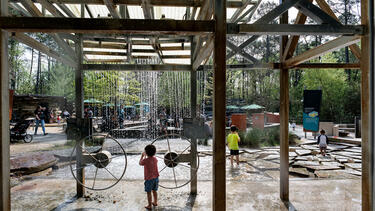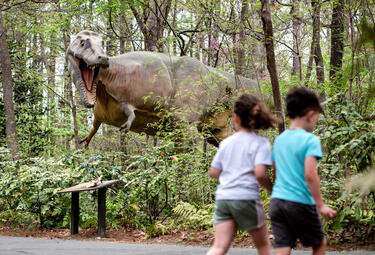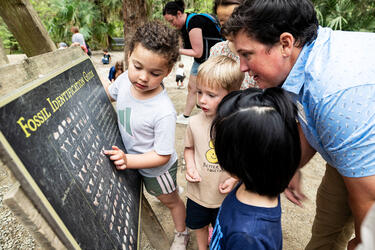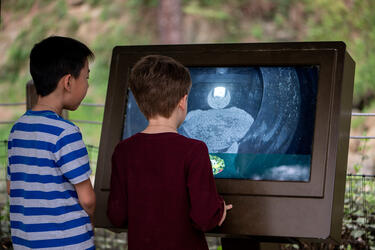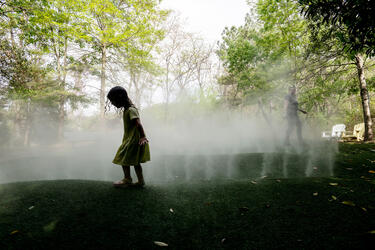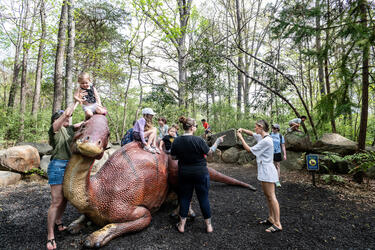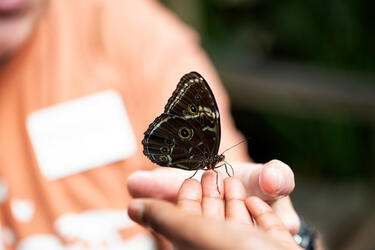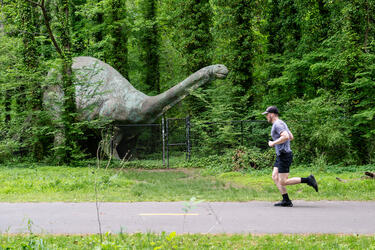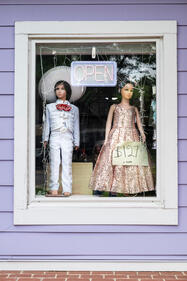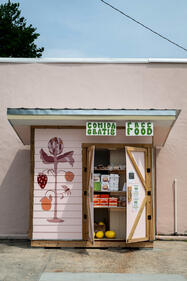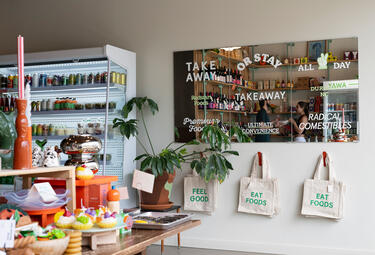Museum and Community: Building on What’s Beloved
Generations of kids have grown up at Durham’s Museum of Life and Science. CEO Carrie Heinonen ’97 is working to expand the museum’s reach by connecting with underserved communities and positioning the institution as a starting point for the region’s STEM workforce pipeline.
It’s a few minutes before 9 a.m. and the entrance to the Museum of Life and Science in Durham, North Carolina, is crowded with grandparents holding toddlers’ pudgy hands, parents pushing rolling explorers, and 10-year-old museum veterans bursting with intricate plans for where to head first. The eager horde that gathers before the doors open is a sign of how Durham views its museum.
“People raise their children on this campus. They have a very strong emotional attachment,” says Carrie Heinonen ’97, the museum’s president and CEO. “Some come for six hours a day, three days a week.” The museum is a science center, a nature park, and an accredited zoo that packs its 84 acres with exhibits, experiences, and opportunities to play and explore in ways that spark curiosity.
“We live here,” says Tiffany Griffin, an entrepreneur whose daughter is seven. “We got a membership as soon as she started crawling, and she still always wants to come.”
Bailey Ryan, one of the museum’s exhibit developers, says, “It’s not a museum where you go to read signs and learn facts. If you walk into the insectarium being a little scared of bugs, you walk out knowing that bugs do good stuff and feeling like you were brave because you touched one.”
“This place has got a soul,” Heinonen says. “It was created for this community, and this community created this place. It’s beloved because of that.”
But being beloved doesn’t pay the bills. To fulfil its mission while remaining financially sustainabile, the museum invests heavily in partnerships across all sectors. A partnership with Durham schools has museum educators delivering weekly experiential science classes to fifth graders—and boosting their science test scores. Partnerships with nonprofits connect the museum to audiences that don’t yet know about it. Partnerships with universities and businesses deliver programing that lets kids meet STEM professionals who look like them. And those private-sector partnerships also deliver financial support.
Heinonen says zoos do better with earned revenue than many other types of museums, but funding is always a focus for her. And she seeks it from any potential source. “You’ve just got to go in for all.” Heinonen adds, “We have also invested in our development program. We’re talking about this emotional relationship we have with people and how they can ensure that we stay strong as a community resource. We’re helping them understand that we’re a nonprofit and we do rely on donations to an extent.”
Durham is home to Duke and North Carolina Central universities, an outdoorsy place in the rolling green hills of the state’s Piedmont region—famously, two hours from the coast and two hours from the mountains. There are more cultural events and farmers’ markets than a city of 300,000 seems entitled to.
“There’s a down-to-earth-ness,” says Griffin, a former civil servant, academic, and co-owner of Bright Black, a Black-owned candlemaker. “It’s very diverse. People share space and recognize the interconnectedness of their lives.” Understanding that engagement is necessary to keep what people appreciate about Durham, she adds. “It’s a ‘We support our institutions’ kind of city.”
The museum is one of those institutions. Established in 1946 as a small volunteer-led nature center in the city’s bird sanctuary, it has grown alongside the city and region. It shares a focus on science and productive exploration with Research Triangle Park (RTP), the innovation hub founded in 1959 to connect the area’s universities and industry, now home to 300 science and technology firms and 60,000 workers.
Given the museum’s limited resources, every exhibit represents execution on a strategic priority. Just steps into the museum’s main building is the recently reimagined and dramatically enlarged Play to Learn exhibit, which targets guests aged five and under.
“Our bread and butter is 4- to 10-year-olds,” Heinonen says. “But we know between 0 and 7 is the sweet spot for affecting kids’ cognitive development, so, from a mission perspective of having the biggest impact, we said, let’s make sure we’re there for that.”
Play to Learn has sensory-focused areas for infants and toddlers. Observing the action in the ball zone, Ryan explains, “What looks like play is actually cutting-edge baby research into ‘What is gravity? If I drop this thing five times, is it going to drop the same way?’”
Ryan and the museum’s other exhibit developer, Nico Ekanem, both have backgrounds in neuroscience. She draws on that training to create exhibits that facilitate fun and are also valuable developmentally, she says. “They’re exploring, testing, prototyping, failing, and trying again.”
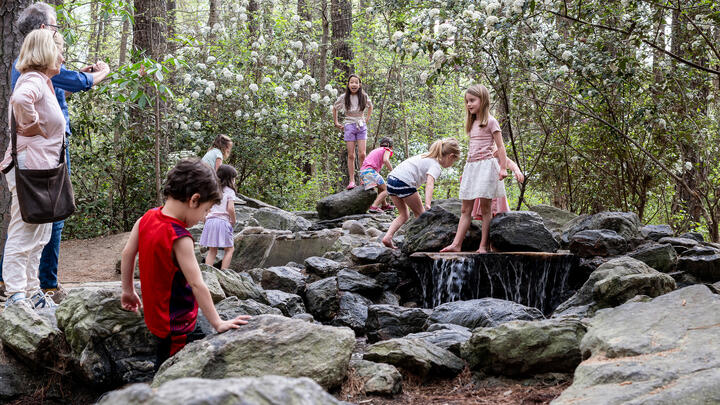

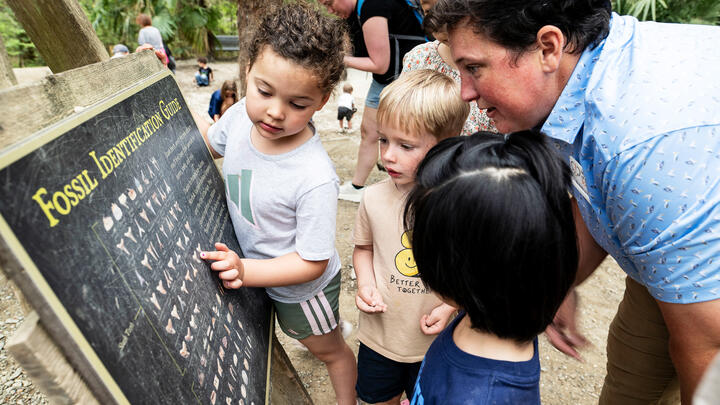

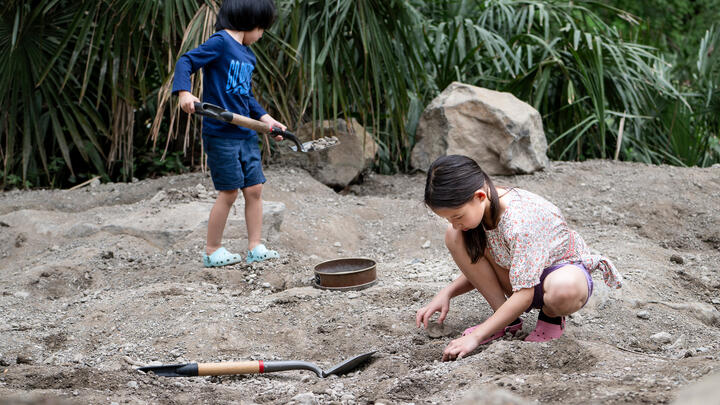
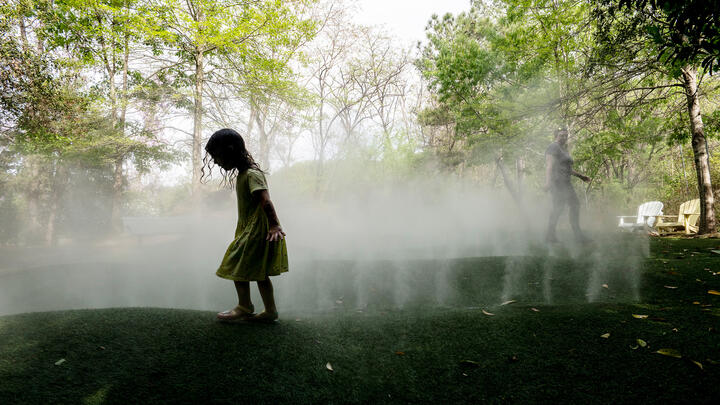
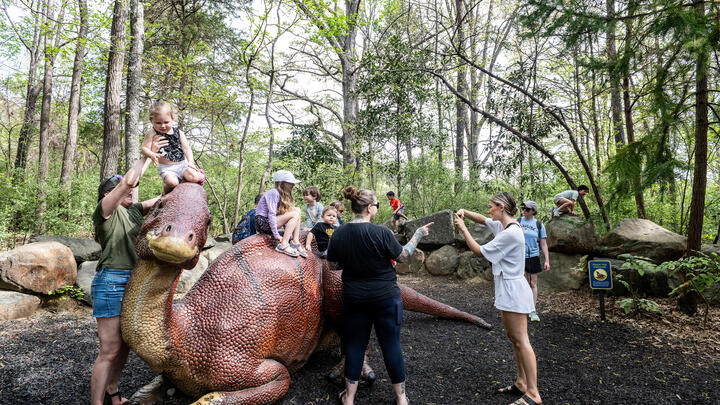
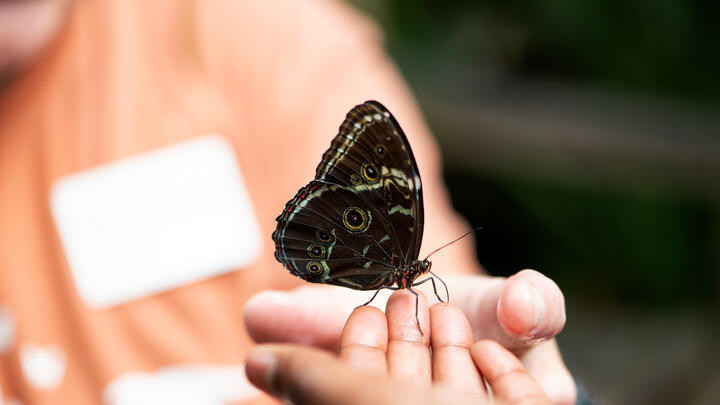
Durham—the city and the county—are growing. Incomes are climbing. Crime is falling. And, in recent decades, the Latino population has increased significantly. “We want to be a museum for this whole evolving community,” Heinonen says. The organization wants the mix of visitors to reflect the area’s demographics, she says, so specific programs target communities where word of mouth might not suffice or where hurdles to visiting could be removed. “We want to shore up connections that may not historically have been as strong.”
There are over 20 days a year when Durham County residents enter the museum for free. The museum has also partnered with organizations that have established deep ties with communities that are underrepresented in STEM. Those partners are provided with $5 Ignite Learning memberships to offer to families in their communities; last year, over 1,000 households took advantage of the program.
But the museum has learned that cost isn’t the only hurdle, especially for families that aren’t accustomed to going to museums. “We have listening sessions with different community partners,” says Stepheny Hine-Laverack, program manager of community and school engagement. “We sometimes hear hard things, but I’m proud that people from across our entire museum are there for those sessions so we can get better.”
Mercedes McCurley first visited the museum 14 years ago, when she brought her 18-month-old grandson. “He loved it. I loved that he loved it,” she says. “But I am a woman of color and at that point, I didn’t have a sense of belonging. There was this feeling—again, this was years ago—that it was a playground for White moms.”
McCurley, who was born in Colombia, is a senior program manager at Durham Public Schools, where she has worked supporting children and immigrant families for decades. She made an appointment to talk with the person leading community engagement. “We sat down and had a really honest conversation,” she says. “I’ve had many conversations like that with other organizations. They just kind of nod and nothing happens. I respect and love the Museum of Life and Science because they asked, ‘What can we do?’”
McCurley became an Ignite Learning partner and typically connects 40 to 50 families to memberships every year. Meanwhile, the museum increased the number of staff who are native Spanish speakers.
Even so, because so many people of color, especially those from working-class communities, have had bad experiences with cultural institutions, she encourages first-timers to go with others. “If you go as a group of three or four moms together, that can ease the nervousness,” she says. “Sometimes we joke about it. You walk into a theater, and they go, ‘The employees’ entrance is on the side.’ Those experiences are real. They are very, very real.”
Heinonen says, “Our ultimate goal is to make sure we’re a place for everyone. It’s exciting when we start seeing success with our partners connecting us to communities who might not have been coming. It’s exciting when folks from all backgrounds feel really safe and welcome.”
But she expects the organization to continue to learn and adapt. “If we need to change the way we do something for people to feel welcome, then we want to do that.”
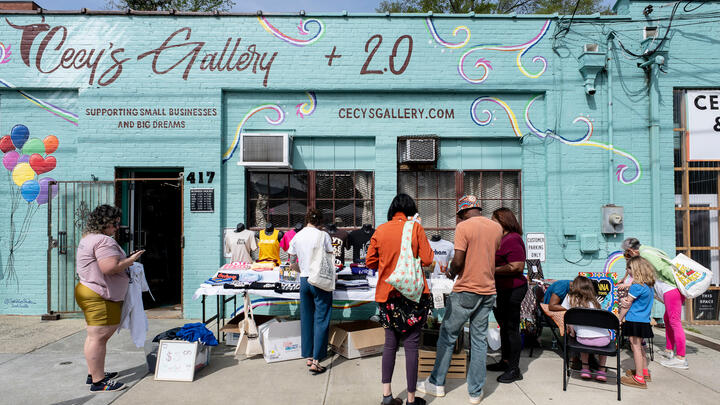

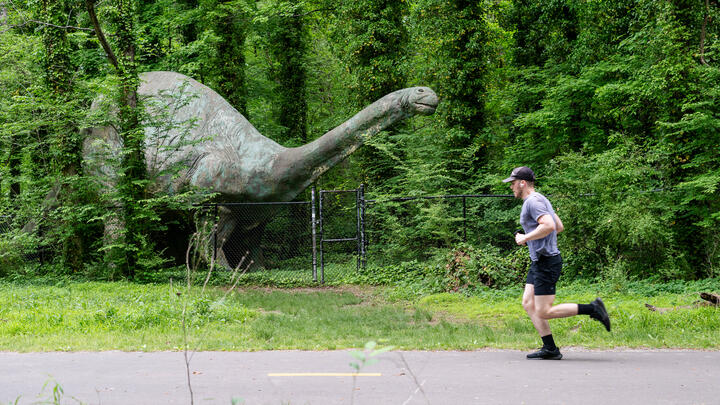
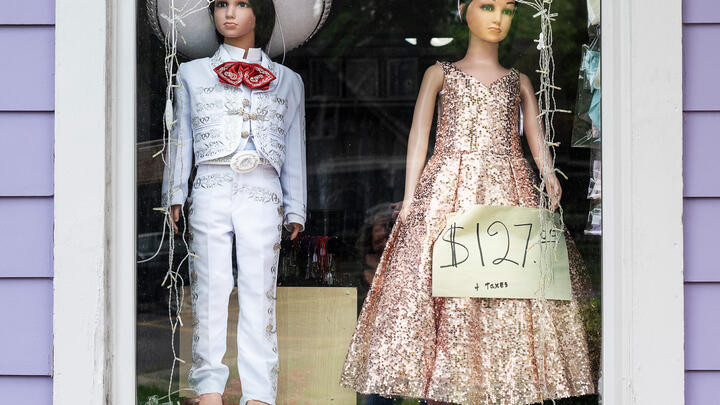
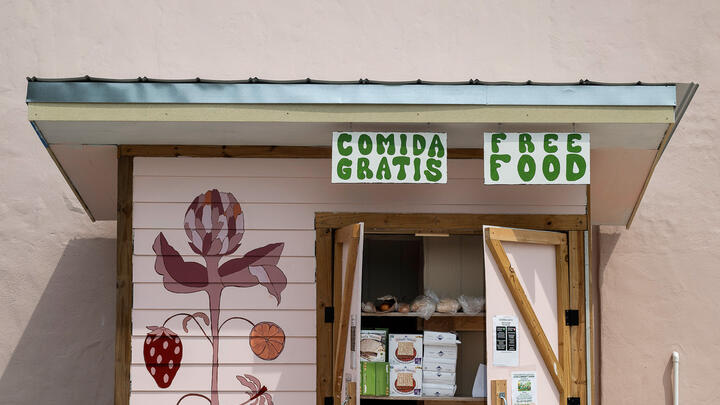
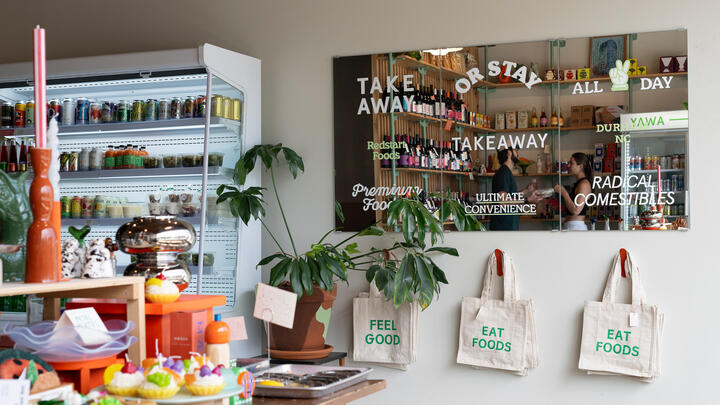

Science isn’t only a part of the name of the museum. Regular visitors may see science happening at the museum. Duke researchers run child studies regularly. The wetlands exhibit is a study site for urbanized watershed conservation practices. The red wolves living at the museum are part of a program to protect and restore the critically endangered species that’s native to the region.
While kids are a focus, the museum is growing its programs for adults. “We aspire to be the venue where people learn about the scientific and technological advancements being developed right here in the Research Triangle though universities and industry,” says Heinonen—through talks on the science of cognitive health, for example. Local businesses have presented on the science of cooking, beer, and spirits. Griffin’s Bright Black candle company has done programs both for kids and adults on how scent can tell stories.
These programs also generate revenue, an unceasing necessity even for beloved nonprofits. The young couple who had a fun night learning about the science of spirits might notice that the new pavilion beside the butterfly house hosts weddings. Parents on an educational date night are reminded that the museum hosts birthday parties and runs camps not just during the summer but during school vacations, and even teacher in-service days.
Connecting kids to curiosity, exploration, and critical thinking is part of delivering on the mission. Growing the number of visitors also delivers revenue, and running programs at capacity makes them more cost-efficient. And when the guests have a great experience, they share that with others, helping drive the flywheel of revenue and supporting other programs.
Heinonen, who has a marketing background, says that conventional marketing is challenging for such an uncategorizable institution. “If you’re here, you realize why you should be here. This place sells itself,” she says. “But if you haven’t been here, nobody can fully explain it to you.”
The museum cherishes the kids and parents who visit day after day, year after year. But to be sure the museum isn’t overlooked, Heinonen needs to also reach people who have never visited the campus. She wants donors, government officials, and other potential strategic partners to see the institution with a different lens.
“The exhibits and education teams are helping the next generation of scientific thinkers develop cognitive and critical thinking skills. That’s inspirational.” She adds, “It’s also the top of the funnel for workforce development. The reason companies in the Research Triangle and the universities and the medical centers can be successful is because of the educated workforce that’s available here.” So decision-makers who may not have a personal tie to the museum should still support it.
“Looking at our society right now,” she says, “what could be more important than ensuring that the next generation comes up knowing what it means to be a critical thinker and how to approach the world with curiosity?”
